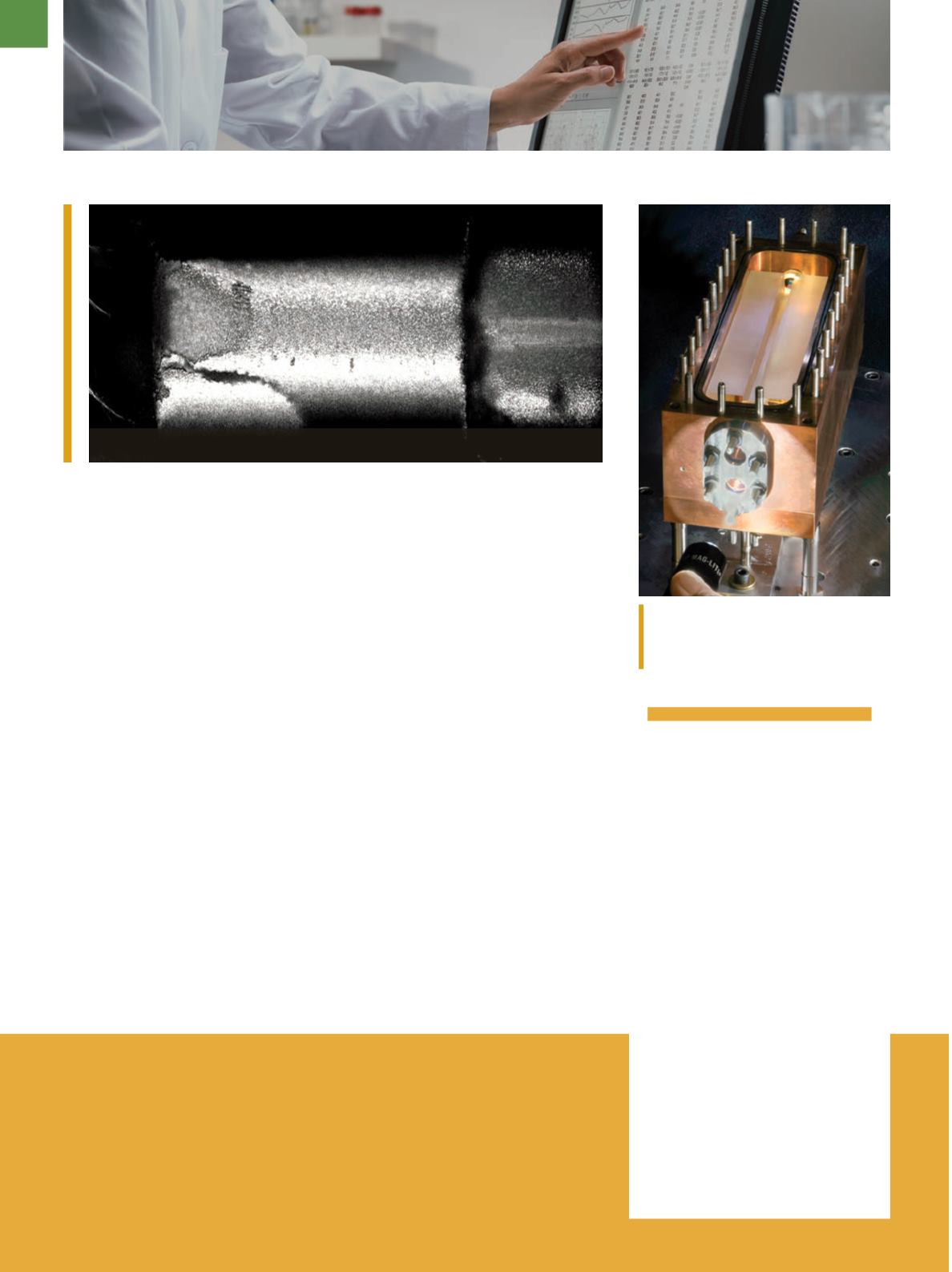

Understanding failure
inglassymaterials
Researchers at University of Penn-
sylvania, Philadelphia, discovered an
important commonality that seems to
extend through the wide range of glassy
materials. They demonstrated that the
scaling between a glassy material’s stiff-
ness and strength remains unchanged,
implying a constant critical strain that
these materials can withstand before
catastrophic failure, despite the extreme
variation found among the physical
properties of different glasses. This con-
stant critical strain provides insight into
the fundamental “seed” out of which
glass failure grows—a small group of the
glass’s constituent particles or atoms
that change shape in a collective way.
Despite the disorder that epitomizes
glass, this coordinated activity appears
to be universal among many glassy sys-
tems, such as certain metals, polymers,
and colloids, and is an important starting
point for designing more durable materi-
als.
For more information: Daniel Gianola,
215.898.7246,
gianola@seas.upenn.edu,
www.seas.upenn.edu.
Inaugural photonic
pressure sensor
outshinesmercurymodel
A unique pressure-sensing device
recently surpassed the performance of
the best mercury-based techniques in
resolution, speed, and range at a frac-
tion of the size, according to scientists
at NIST, Gaithersburg, Md. The new in-
strument, called a fixed-length optical
cavity (FLOC), works by detecting sub-
tle changes in the wavelength of light
passing through a cavity filled with ni-
trogen gas.
The FLOC system is poised to de-
pose traditional mercury pressure sen-
sors (manometers) as the standard used
to calibrate commercial equipment,
according to researchers. The new de-
sign is also a promising candidate for a
factory-floor pressure instrument that
could be used by a range of industries, in-
cluding semiconductor, glass, and aero-
TESTING | CHARACTERIZATION
BRIEFS
Nikon Instruments Inc.,
Melville, N.Y., entered a strategic partnership with
JEOL,
Peabody, Mass., to develop techniques to address correlative light and electron
microscopy. Along with progress in super-resolution technologies, there is growing
interest in correlating light microscopy data with electronmicroscopy data to further
push the limits of resolution. The alliance plans to develop tools to combine the
advantages of both methods.
nikoninstruments.com,
jeolusa.com.
Microscope image of a micropillar failing after the formation of a shear band.
Sigma Labs Inc.,
Santa Fe, N.M., a
developer of inspection
systems for metal-based
additive manufacturing
technologies, received a
contract from Honeywell
Aerospace as part of a
Defense Advanced
Research Project Agency
(DARPA) Phase II award
to develop an integrated
computational materials
engineering (ICME)
framework to
accurately predict the
properties of metal
components produced
using additive
manufacturing.
sigmalabsinc.com.
FLOC gauges pressure by detecting
subtle differences in the wavelength
of light resonating in two channels.
Courtesy of NIST.
A D V A N C E D M A T E R I A L S & P R O C E S S E S | F E B R U A R Y 2 0 1 5
1 0


















